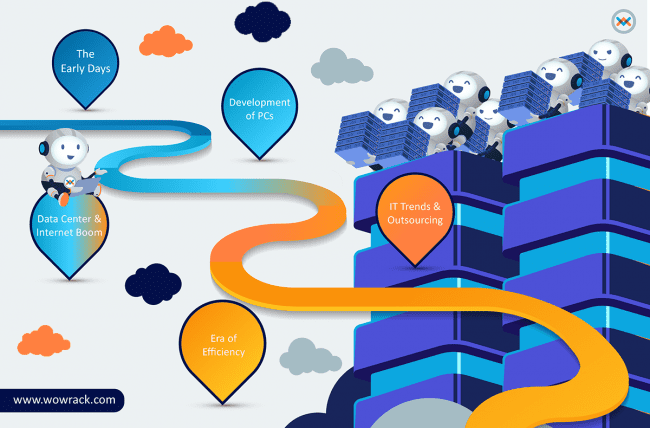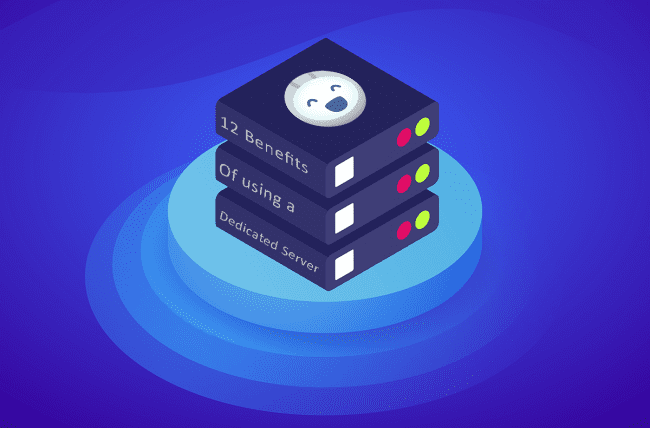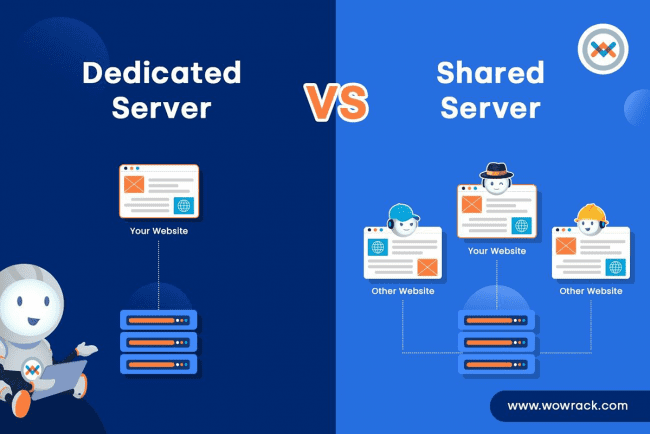Servers may “serve” nothing more than a computer that supplies data and applications used by clients. This holiday season we're breaking down servers (not literally) in case you are interested in what they can offer you in 2017.
Every network is built off a series of elements. For example, a typical LAN (Local Area Network) consists of common devices that often exist in many business settings. If your business is using IT, the chances are that these elements will likely be present within their IT infrastructure.
On the first day of Christmas my DC tech said to me:
And a hypervisor let’s servers sit within a server!
Virtual servers – in layman’s terms are: “servers within a server.” Installing a network tool called a hypervisor on a server within (or on top) lets you run multiple virtual machines (VMs). A hypervisor is essentially a software tool for segmenting partitions of a server in multiple portions to create smaller-sized servers.
On the second day of Christmas my DC tech said to me:
Two-node failover clusters.
Cluster – a cluster is a group of servers that perform the same functions in parallel, allowing for multiple web servers or data servers to share the workloads amongst the group. This way, you don’t have to make your single server larger just to increase capacity. Instead, just add more servers together in your architecture!
On the third day of Christmas my DC tech said to me:
Three thousand workloads...
Mainframe servers – these servers are very large and serve as multi-functional equipment. They have the capability to run enormous amounts of traffic, supporting the workloads of thousands of users. Generally costing millions of dollars and found almost exclusively in fortune 500 companies or big financial firms.
On the fourth day of Christmas my DC tech said to me:
Four redundant layers.
High Availability servers – although not as powerful (or expensive) as mainframe servers, these types of servers are also geared to house production applications. They are still very powerful computing intensive machines, but they also offer as the name implies: high availability. What this feature does is provide multiple hard drives arranged typically in a RAID array to offer redundancy, power supply backups, and redundant network interfaces.
On the fifth day of Christmas my DC tech said to me:
Five websites down!
Web server – if you ever wondered how web pages are displayed, it’s because your internet browsers are connecting to a web server. Several software appliances can perform the function of a web server such as Apache or Microsoft IIS (Internet Information Services).
On the sixth day of Christmas my DC tech said to me:
Six files-a-sharing.
File server – functions as a server to share files with users. Examples include Linux based SAMBA servers to allow for FTP (File Transfer Protocol). Today most file servers are cloud-based such as Google Drive and Dropbox.
On the seventh day of Christmas my DC tech said to me:
Seven Too. Many. Color. Pages.
Print server – manages the queue of printing requests by all the users in an office. Instead of having printing jobs sent directly to a printer, it gets directed to the print server and then the server distributes the workloads through designated printers.
On the eighth day of Christmas my DC tech said to me:
Eight middleware apps need debugging.
Application server – these types of servers function to run enterprise applications such as Enterprise Resource Planning (ERP) software such as Systems, Applications, and Products (SAP) or a locally developed application.
On the ninth day of Christmas my DC tech said to me:
Nine email servers deleted.
Mail server— functioned (past tense) as a server to handle all the email within a business. Today Office 365, Microsoft Exchange, and Google’s Gmail have become the gold standard SaaS models for handling email.
On the tenth day of Christmas my DC tech said to me:
Ten databases still not upgraded.
Database server – almost always present in every business, these servers organize the data used by employees and system administrators. Popular options include Microsoft SQL and Oracle.
On the eleventh day of Christmas my DC tech said to me:
Eleven videos buffering.
Media server – these servers act exclusively for video streaming and sharing photographs (used to host photo galleries).
On the twelfth day of Christmas my DC tech said to me:
Twelve groups collaborating.
Collaboration server – functions as a waypoint enabling business to work together. Examples are Microsoft SharePoint and IMB Lotus.
Happy holidays from the Wowrack team!







